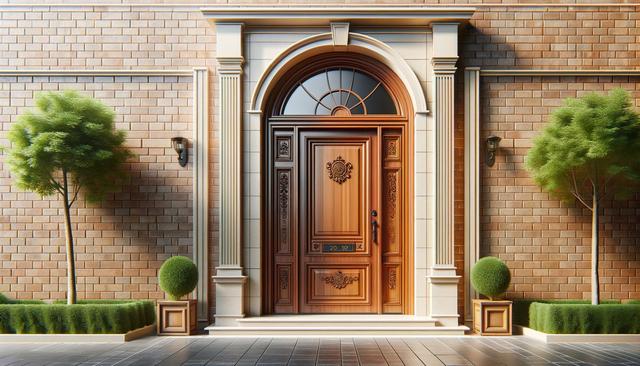Understanding the Importance of Entry Doors
Your home’s front door is more than just an entry point—it’s a statement about your personal style, a barrier for safety, and a component that impacts energy efficiency. The right entry door should balance aesthetics with functionality, offering a welcoming appearance while protecting what’s inside. Whether you live in a modern urban dwelling or a traditional suburban house, the design and material of your door can greatly influence your home’s curb appeal and overall value. It’s important to consider how different materials perform in terms of durability, maintenance, and longevity. Wood, steel, and fiberglass are among the most common materials used for residential entry doors, each offering distinct advantages depending on your specific needs and climate.
Exploring Materials for Style and Durability
When selecting an entry door, the material is one of the first decisions to make, as it affects the door’s appearance, resilience, and upkeep requirements. Wooden doors are often chosen for their classic and timeless appeal, offering rich textures and natural warmth. However, they may require regular sealing or painting to protect against weather damage. Steel doors are known for their strength and affordability, making them a solid choice for homeowners prioritizing security. They typically come with a foam core for insulation, contributing to energy savings. Fiberglass entry doors are gaining popularity due to their versatility and low maintenance needs. These doors can mimic the look of wood while resisting warping, cracking, and dents.
Each material has its own set of benefits:
- Wood: Traditional look, customizable, but needs periodic care
- Steel: High-security, energy-efficient, and cost-effective
- Fiberglass: Durable, energy-efficient, and minimal maintenance
Choosing the right material often depends on your budget, climate, and personal preferences.
Security Features to Consider
Security is a primary concern when installing a new front door. A strong, well-constructed entry door can act as a significant deterrent to intruders. When evaluating options, look for doors with solid cores and reinforced frames. Multi-point locking systems provide enhanced protection by securing the door at several points along the frame. Additionally, consider upgrading the hardware, such as hinges and deadbolts, to high-quality, tamper-resistant models. Impact-resistant glass panels, if featured, should be double or triple-paned and treated for shatter resistance. Peepholes, smart locks, and video doorbells can also add layers of security without compromising style.
Key security enhancements might include:
- Reinforced door frames and hinges
- Deadbolts with a minimum one-inch throw
- Smart lock integration for remote access
- Security-rated glass for doors with windows
Investing in these features not only strengthens your home’s defenses but can also provide peace of mind, especially for families or those in high-traffic areas.
Energy Efficiency and Climate Considerations
Energy efficiency is another essential factor when choosing an entry door, particularly for homes in regions with extreme temperatures. Well-insulated doors help maintain interior comfort by minimizing heat loss in winter and heat gain in summer. Look for doors with ENERGY STAR certification, which indicates they meet or exceed energy performance standards. Weatherstripping, insulated cores, and quality seals around the edges are critical components that contribute to a door’s thermal efficiency. Glass elements should be double-glazed and include low-emissivity (Low-E) coatings to reduce energy transfer.
To optimize energy efficiency, consider the following:
- Materials with natural insulating properties like fiberglass or insulated steel
- Properly sealed frames and thresholds
- Doors with thermal breaks to prevent heat conduction
- Advanced glass features in decorative inserts
By selecting an energy-efficient entry door, homeowners can potentially reduce heating and cooling costs while improving indoor comfort year-round.
Design and Curb Appeal
Beyond functionality, your front door contributes significantly to your home’s first impression. From color to hardware to decorative accents, there are countless ways to personalize the look of your entry. Bold colors can create a striking focal point, while traditional hues offer timeless elegance. Glass inserts, sidelights, and transoms can introduce natural light and add sophistication. Additionally, thoughtfully chosen hardware such as handles, knockers, and house numbers can enhance the door’s appearance while maintaining cohesion with the home’s exterior style. Whether your aesthetic is contemporary, rustic, or classic, there’s an entry door design that can complement it seamlessly.
Popular design features include:
- Panel styles ranging from minimalist to ornate
- Frosted or stained glass for added privacy and charm
- Contrasting trim or decorative moldings
- Integrated lighting or smart home features
Choosing design elements that align with your home’s architecture helps to create a harmonious and inviting entrance.
Conclusion: Making a Well-Rounded Choice
Selecting an entry door for your home involves balancing aesthetics, functionality, and practicality. Whether your priorities lie in boosting curb appeal, enhancing security, or improving energy efficiency, there are numerous options available to fit your needs. By focusing on quality materials, appropriate security features, and energy-saving components, homeowners can make thoughtful choices that offer long-term value. An entry door is more than just a structural necessity—it’s a key part of your home’s identity and a contributor to its overall performance. Taking the time to research and assess different options ensures that your front door will serve you well for years to come.




Leave a Reply